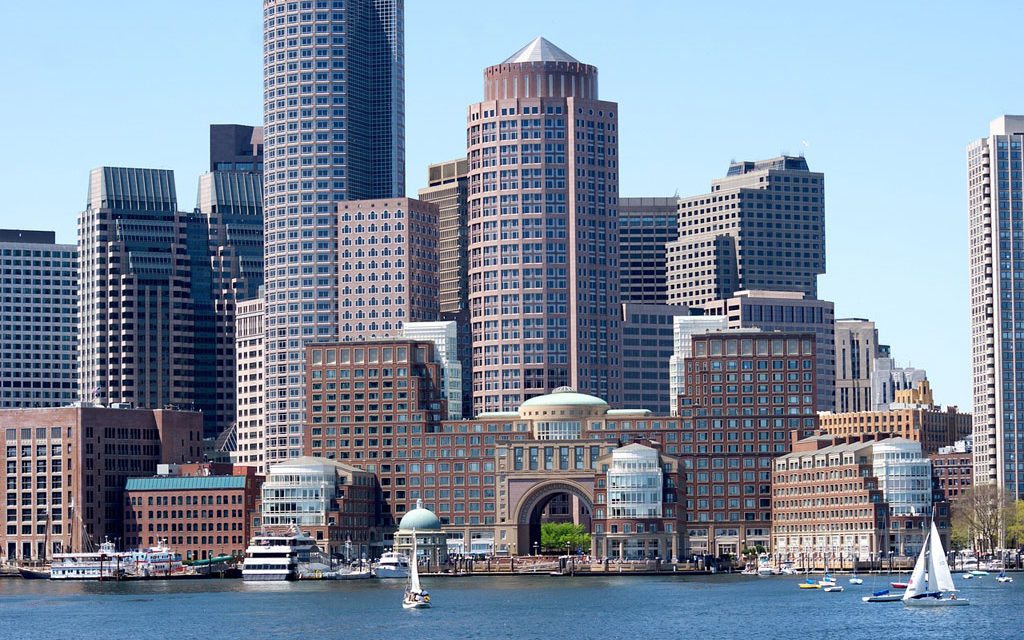Targeting both LEEDv4 ID+C Platinum and WELL Silver certifications, the fit-out design aims to minimize ecological impact, plan for operational excellence, and foster an environment where employees thrive.
In its new Boston office, Arup, the global design and consulting firm for the built environment, is doubling down on environmentally-conscious design by committing to two industry standards: LEED v4 ID+C Platinum and WELL Silver. The work space at 60 Street will be one of the first projects to incorporate both of these goals into its design, positioning Arup at the vanguard of high performance design. “Arup is committed to creating both a sustainable and healthy office environment. While LEED focuses on strategies that reduce energy and water consumption, WELL emphasizes health and wellbeing initiatives to achieve a workplace optimized for people,” said Tim McCaul, Principal and Boston Group Leader. “We believe that working in a healthy building relates to employee performance, recruitment and retention, reduced absenteeism, embodiment of brand, and company culture.”
The WELL program identifies 102 performance metrics, design strategies, and procedures that can be implemented by owners, operators, and the design team. Based on research from diverse disciplines that expand beyond the traditional building industry—the health sciences, occupational psychology, management consulting, facility management, data science, and technology—WELL quantifies on multiple fronts that health can be effectively addressed by design.
Among the WELL-compliant features at the Boston location:
- Material selection that promotes good indoor-air quality through the use of products proven not to emit harmful contaminants, and that disclose health and environmental impacts
- Circadian lighting systems designed by Arup with dynamic controls that automatically adjust color and brightness based on the position of the sun to replicate daylight
- Active design through space planning and sit/stand desks to encourage more movement and less sedentariness during the day
- End-of-pipe water filtration that improve the taste and quality of tap water, promoting proper hydration
- Ventilation that optimizes air quality through filtration, ventilation rates that respond to occupancy levels, and provides fresh outdoor air
The Arup Boston office will serve as a living laboratory to test its own wellbeing assessment to help quantify the impact of health and wellbeing strategies. The assessment involves a WELL-focused pre and post occupancy survey developed with in house environmental psychologists, as well as a custom-designed indoor environmental quality sensor kit built by Arup programmers to stream real-time data.
“The steps we’re taking at our Boston office reaffirm Arup as a leader in innovation and sustainability. By harnessing the built environment as a vehicle to support human health, wellbeing, and comfort, we significantly advance our goal of inspiring clients to thrive in a changing world,” said Mark Walsh-Cooke, Principal.
Oxford Properties Group, building owner, was instrumental in helping Arup meet the prerequisites for WELL and LEED certifications. Core team members include Dyer Brown Architects for architecture and interior design; Cordeman & Company as general contractor; Officeworks as furniture vendor, and Arup for lighting, WELL consulting, commissioning, acoustics, and structures.
Arup has had an office in the Boston area for over 17 years. In that time, Boston staff have worked with a broad range of clients including many of the best regarded firms, institutions and agencies in the region and across the globe. Current and recent projects include Northeastern University Interdisciplinary Science & Engineering Complex, MBTA Green Line Extension, Bruce C. Bolling Municipal Building at Dudley Square, MIT Site 4 Graduate Student Tower, Boston Properties Back Bay Station mixed use development and Partners Healthcare Resiliency Masterplan.
About Arup
Arup provides planning, engineering, design, and consulting services for the most prominent projects and sites in the built environment. Since its founding in 1946, the firm has consistently delivered technical excellence, innovation, and value to its clients, while maintaining its core mission of shaping a better world. Arup opened its first US office more than 30 years ago and now employs 1,300 people in the Americas. The firm’s employee-ownership structure promotes ongoing investment in joint research to yield better outcomes that benefit its clients and partners. Visit Arup’s website, www.arup.com, and the online magazine of Arup in the Americas, doggerel.arup.com, for more information.




